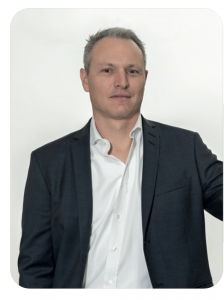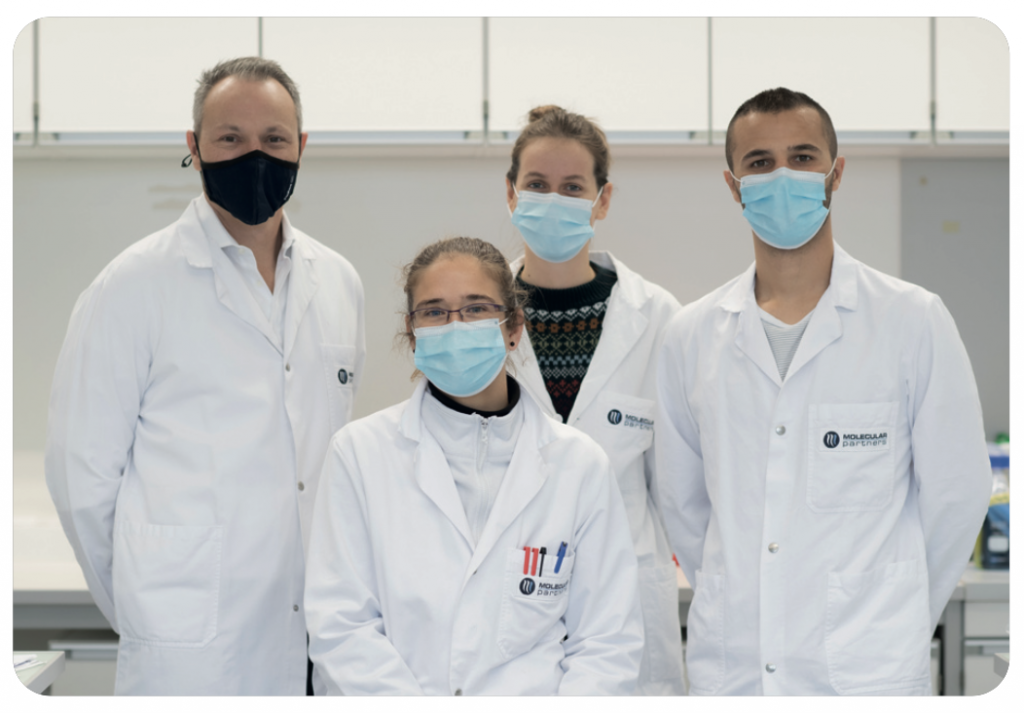- Get directions
- Leave a review
- Claim listing
- Bookmark
- Share
- Report
- prev
- next
- Tuesday, April 20, 2021 @ 10:00 am
During COVID-19 negotiations and cooperation agreements were concluded in record time. Our collaboration with Novartis for ensovibep (MP0420) and MP0423 DARPin® candidates against COVID-19 was signed in just a few weeks

Patrick Amstutz, Molecular Partners | CEO
SIX’s Fabian Gerber speaks to Molecular Partners’ CEO Patrick Amstutz
1. How have you managed to steer the Molecular Partners team through the COVID-19 crisis and what have been the main challenges?
The COVID-19 pandemic was a challenge to our organization and our daily work processes. By overcoming these difficulties together and investing our energy to develop a potential solution for this disease, we turned the challenge into an unexpected opportunity: namely to demonstrate the value of our proprietary DARPin®-platform to fight the global pandemic.
Thanks to our strong team and our validated platform, we were able to bring the first and still only multi-specific anti-COVID drug candidate to clinic in under nine months, where antibody- based approaches are using mixtures to target more than one antigen. Our researchers took on extra shifts as the COVID-19 activities came on top of our existing R&D pipeline.
To secure effective operations, we decided to maintain the majority of our research and development teams on-site, while G&A staff were encouraged to work from home as much as possible. This freed up office space for the R&D team, so that they had sufficient room for the required distancing.
2. Was the CRL (Complete Response Letter) received for abicipar for wet-AMD in June a surprise for your organization?
Not sure if surprise is the right word. We expected an approval. Disappointment is a more accurate word. The agency took the position that the risk/benefit profile was not sufficient for an approval at this time. This relates to the inflammation rates seen in the Phase III trials, both of which yielded positive efficacy results.
“Our specialist investors clearly believe in the potential and power of our COVID-19 therapeutic program and consider it to be in the sweet spot to perfectly complement vaccines.”
Given the “less-frequent” dosing profile demonstrated by abicipar and the endpoints met in the Phase III trials, we believe there is still value in exploring the potential path to approval of the program. As we don’t own the program, we are in an ongoing dialogue with our partner Abbvie on how to maximize the value of abicipar.
3. How did you then ensure that your company still had a bright future?
As a reminder, abicipar, while it is our most ‘senior’ asset, has been partnered for almost 10 years now. Our pipeline and our discovery have moved into oncology and now virology. So, we have been building our future for many years, ensuring that not just one program would decide our fate.
Some of the most difficult moments in the life of a biotech company are associated with a live-or-die decision for its lead program. We enjoy the benefit of a broad discovery engine where multiple candidates have been, and continue to be, generated for the benefit of patients.
The capital increase which we were able to execute just one week after the CRL - at basically zero discount - also underlined that there were many specialist investors who prefer to invest in our earlier pipeline over abicipar. They strongly believe in the value creation, combining top science with the differentiating DARPin® platform to create a portfolio of candidates.
4. Why were investors, who fully absorbed the capital increase in July, so keen to be part of the Molecular Partners story and where did you and they see the opportunities?
These investors were clearly aligned with the potential of the company pipeline and discovery engine, and understood that the abicipar setback had no cross talk to the other programs. They recognized that there was so much more to value in Molecular Partners, as we are discussing here today.
The new specialist investors clearly believed – and continue to do so - in the potential and power of our COVID-19 therapeutic program with ensovibep (MP0420) and MP0423, and consider our therapeutics in the sweet spot to perfectly complement vaccines.
Moreover, they see the scientific value of our programs in oncology, which allow for a tumor-localized activation of the patient’s immune system, limiting side effects and hence ultimately expanding the therapeutic window.
Both programs are great examples of our ‘DARPin® difference’, the unique properties illustrating the strength of our platform and the underlying DARPin® molecules. This platform makes it possible for us to continuously open new opportunities for Molecular Partners and hence for our shareholders.
5. Where do your priorities for 2021 lie and what are the milestones or value inflections which excite you most?
Our priorities focus on driving our clinical assets forward, the continued expansion of our therapeutics platforms and broadening our newly established virology program.
The 2021 milestones are as follows:
- Proof of Concept and a potential Emergency Use Application for our COVID-19 therapeutic ensovibep (MP0420)
- Setting the dosing scheme with our lead I/O (imuno- oncology) asset, AMG 506 / MP0310, and the potential move of the program into the next clinical trial stages, together with our partner Amgen.
- Advancing MP0317, our second I/O asset into clinical studies
- Selecting the next development candidate for the pipeline
Another key priority for myself and my colleagues on the company’s leadership team remains of course to continue to steer the entire Molecular Partners family safe and sound through the remainder of this crisis.
6. What do you think the lasting impact of COVID-19 will be on the sector?
The industry has rediscovered the term ‘co-opetition’. Competition has become cooperation in specific areas. The new consortia such as ACTIV in the USA or Agile in the UK with their standardized protocols and a pool of recruited patients are emblematic of this. This is a quantum leap for our sector.
Negotiations and cooperation agreements were also concluded substantially faster than in the past. We can confirm this with our important collaboration with Novartis for ensovibep (MP0420) and MP0423, which we signed in just a few weeks. The same can be said for collaborations with external partners such as universities and other research institutions and laboratories - in our case the Spiez laboratory and the universities of Utrecht or Berlin.
In R&D, the industry has been working extremely efficiently under pressure in many cases 24/7. What is normally done in sequence, now runs in parallel. This means higher speed, but also much higher financial risk. In addition, new technologies of know-how management and transfer enable very productive processes. For certain parts of our value chain, this approach should be a blueprint for the future.
